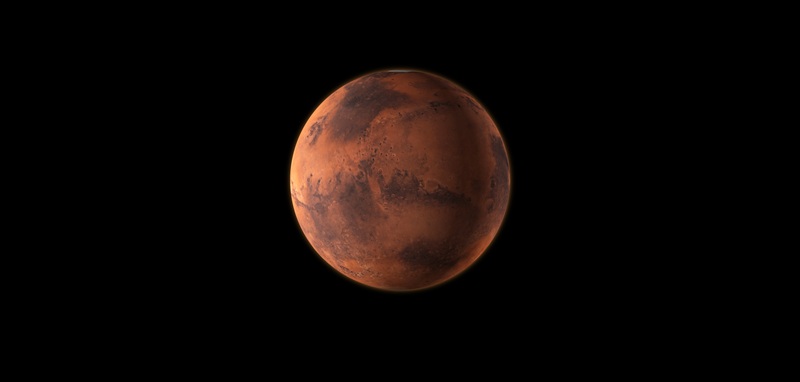Interplanetary colonization is a thrilling prospect teeming with both challenges and opportunities, encompassing everything from survival logistics to establishing a robust financial system for future Martian settlers. One of the most intriguing challenges lies in leveraging emerging technologies like blockchain within the harsh environment of Mars. While blockchain presents promising solutions for decentralized and secure financial transactions, the problems of communication delays and lack of infrastructure make its implementation exceedingly complex on the Red Planet. Neuromorphic computing, however, may offer a breakthrough that could enable secure, decentralized transactions, transforming blockchain viability in space.
The Challenge of Blockchain on Mars
Establishing blockchain and cryptocurrency systems on Mars is not merely a matter of replicating Earth-based protocols but a significantly more complex endeavor due to interplanetary logistics. The substantial distance between Earth and Mars introduces inherent delays in communication, extending up to 44 minutes for a round trip of data transmission. This latency renders real-time financial transactions impractical, given that blockchain technology relies on rapid interactions between nodes. On Earth, the blockchain’s efficacy is rooted in these quick responses, a requirement that Mars’ communication delay disrupts, making efficient transaction verification a considerable challenge.
Additionally, the computational power and energy resources required for cryptocurrency mining and transaction verification pose another problem. While Earth has extensive infrastructure, from high-speed internet to vast energy grids, these are luxuries that Mars currently lacks. Without such facilities, maintaining a blockchain network on Mars as we know it becomes practically unfeasible. The absence of necessary infrastructure, coupled with the unique environmental challenges, complicates the establishment of a decentralized and secure blockchain system on the Martian surface.
Introducing Neuromorphic Computing
Neuromorphic computing emerges as a game-changing technology, mimicking the functional patterns of the human brain to achieve efficient and low-latency data processing. Unlike traditional CPUs that handle data sequentially, neuromorphic chips are designed to process multiple data streams simultaneously, thus excelling in tasks requiring real-time pattern recognition and immediate analysis. This capability potentially addresses some of the critical challenges faced by blockchain on Mars by facilitating rapid and efficient local data processing.
A noteworthy advancement in this field, led by a South Korean research team, has introduced self-compliant neuromorphic computer chips that promise reliable in-memory processing. Unlike previous models, which often displayed inconsistent behavior, these chips provide stable and consistent performance. This breakthrough could be pivotal for Martian colonies, as localized data processing can mitigate many of the communication delays that currently hinder blockchain implementation. By analyzing and processing data in real-time locally, neuromorphic chips can serve as the backbone for local computational tasks, effectively circumventing the dependency on Earth-based systems and enhancing the feasibility of blockchain on Mars.
Building a Decentralized Martian Network
For blockchain technology to function effectively on Mars, a decentralized network of nodes is essential, although constructing such a network on Mars presents significant obstacles. Unlike Earth, Mars doesn’t have an established infrastructure, making it impossible to set up traditional node networks. Neuromorphic computing offers a revolutionary solution through edge computing, which involves processing data at the source rather than relying on distant cloud-based data centers. This concept is particularly suitable for Mars where long-distance data transfer is plagued by substantial delays.
Through the application of neuromorphic chips, Martian colonies could manage blockchain transactions locally, drastically reducing their reliance on Earth’s infrastructure and alleviating communication-related issues. These localized nodes could independently handle the transaction verification and consensus algorithms, ensuring secure and decentralized operations without the delays associated with Earth-based nodes. Such a configuration not only enhances the efficiency of data processing but also fortifies the security of the blockchain network, fostering a robust decentralized system tailored for Martian conditions.
Practical Applications and Scalability
Neuromorphic computing’s potential extends beyond theoretical discussions; it offers tangible applications that could significantly benefit blockchain operations on Mars. The ability of these chips to manage data processing on-site allows for multiple transactions to be bundled and processed simultaneously. During the occasional windows of communication with Earth, these transactions can be synchronized with Earth-based systems, creating efficient “bursts” of data transfer and streamlining the confirmatory processes. This method does not eliminate the inherent communication delays but optimizes transaction management by ensuring that data burst transfers are as efficient as possible.
Using neuromorphic computing, scalable blockchain networks can be developed, overcoming some of the core challenges of interplanetary communication. These networks would be capable of efficiently handling multiple transactions and correcting discrepancies during communication windows. Thus, a practical and operationally viable blockchain system for an extraterrestrial colony can be established, marking a significant step forward in interplanetary financial systems. This adaptable approach not only turns the theoretical into the practical but also paves the way for future innovations in space technology.
The Future of Interplanetary Finance
Interplanetary colonization is an exciting venture, brimming with a host of challenges and opportunities. It involves everything from figuring out survival logistics to creating a robust financial system for future Martian settlers. One of the most compelling challenges is how to use emerging technologies like blockchain in Mars’s harsh conditions. Blockchain offers promising solutions for secure and decentralized financial transactions. However, communication delays and a lack of infrastructure make its implementation on Mars extremely difficult. This is where neuromorphic computing might come into play, offering a potential breakthrough. Neuromorphic computing could enable secure, decentralized transactions, thereby transforming the viability of blockchain in space. By mimicking the human brain’s neural architecture, neuromorphic systems can adapt and function in environments where traditional computing struggles. This innovation holds promise for overcoming the unique hurdles of Martian colonization, pushing the boundaries of what’s possible in space exploration and settlement.

